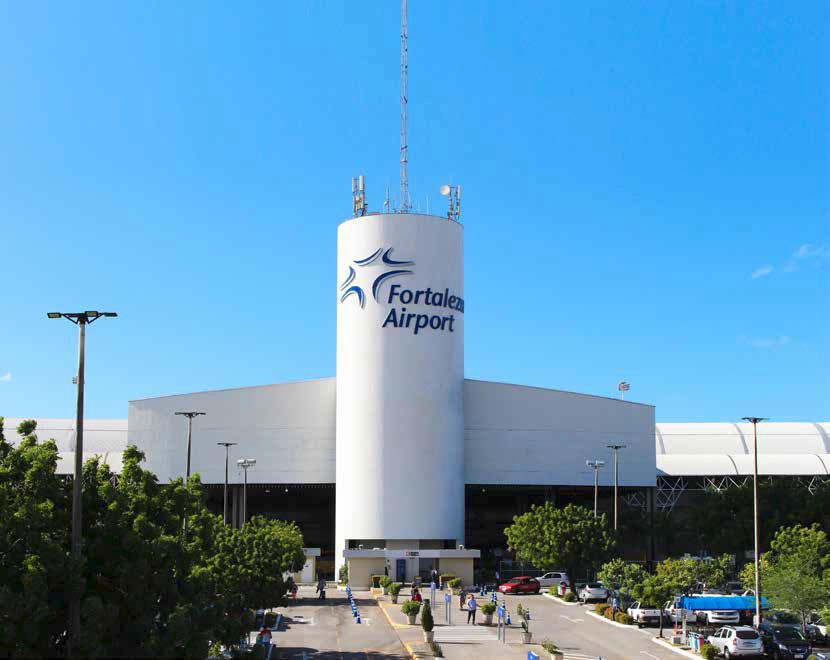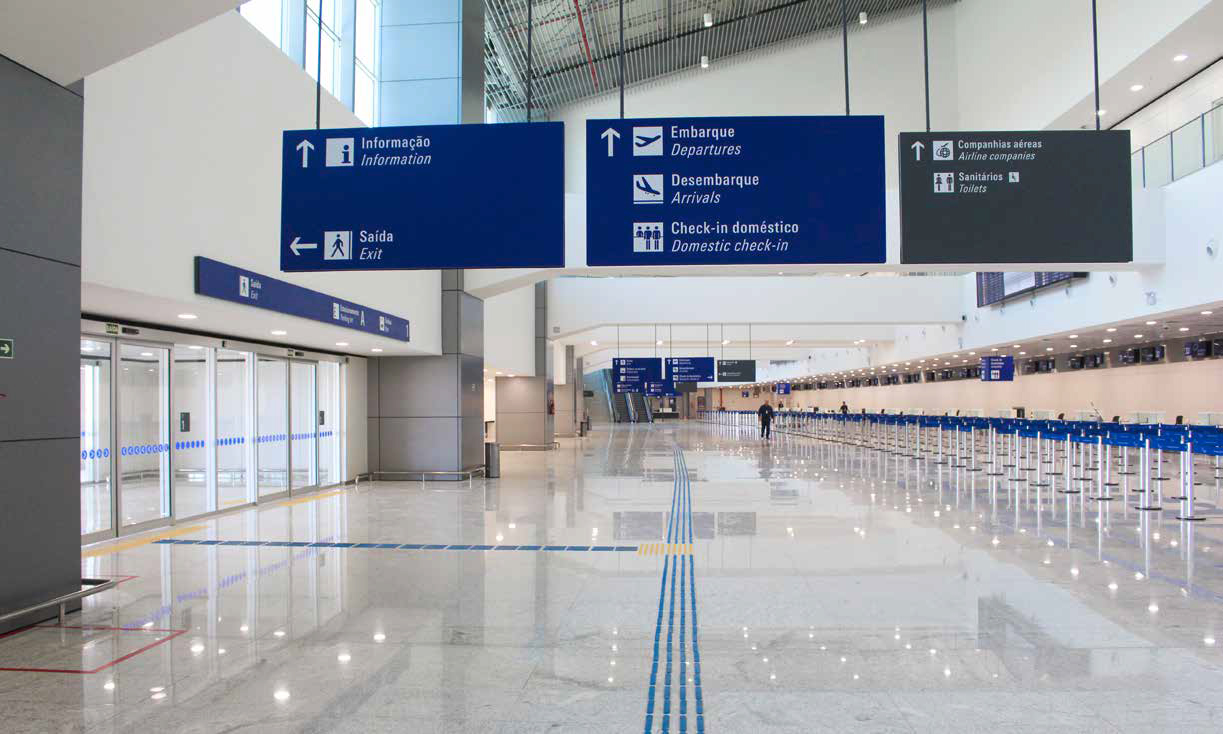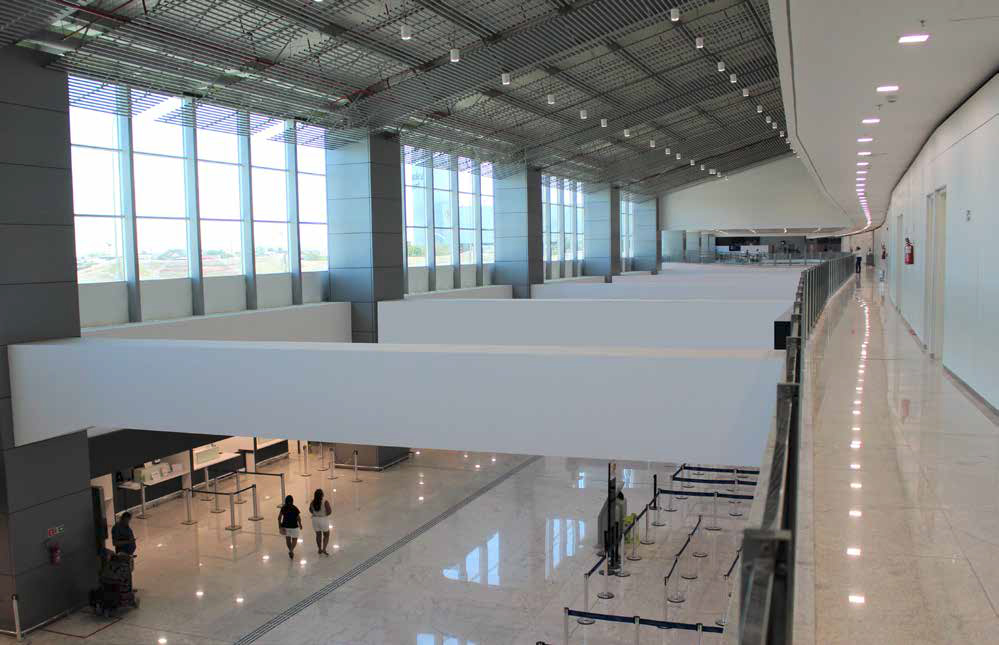先进中间层解决方案部门 项目 Pinto Martins International Airport, Fortaleza, Brazil
ADVANCED INTERLAYER SOLUTIONS



In recent years, simple, “solid-wall” approaches to noise control have arguably been surpassed in many applications, by the introduction of advanced sound control glazing interlayers, such as Trosifol® SC Monolayer (Sound Control product line). As a result, architects and engineers now have the ability to use more and more aesthetic and functional glazed structures in their designs, without the fear of too much noise adversely affecting passengers and workers in the terminals.
The deployment of advanced acoustical interlayers in glass laminates is not just restricted to new builds. Given their ability to outperform monolithic glass, they are ideal for refurbishments or expansions too; something that caught the attention of the architects of a recent airport upgrade in Brazil.
Pinto Martins International Airport serves the northeastern city of Fortaleza, Brazil’s fifth largest and most densely populated city. Offering an extensive domestic network, the airport also serves a number of European services, including TAP Portugal, KLM and Alitalia; all of which offer direct connections to Europe.
The airport, in the state of Ceará, is currently undertaking significant work to both renew existing facilities and construct a new two-story terminal extension, which will expand the passenger terminal, in order to increase its traffic capacity.
Designed by Luiz Deusdara Building Workshop (LDBW), the new terminal exhibits 2,100 m2 (22,600 ft2) of glazing, which has been designed to open up the building to allow as much natural light in as possible. To counter the noise issue, the glazed panels are comprised of 14.76 mm (0.6 in) thick laminated acoustic glass, fabricated by Glassec Viracon, which is constructed from 6 mm (0.24 in) fully tempered clear glass with a reflective coating + 0.76 mm (30 mil) Trosifol® SC Monolayer PVB + 8 mm (0.31 in) fully tempered green glass.
Façade consultant Igor Alvim, Technical Director at QMD Consulting, explains: “There is a real need to provide airport users and the staff that work there with greater acoustical comfort. Our research showed that the 6 + 8 mm panel, with a sound isulated interlayer reached the necessary indexes which would provide the comfort level we were looking for.
Applications
Region
Interlayer
Architect
Laminator
Glazing Contractor
Building Owner







Keep up with the very latest news in laminated glass innovations and procedures by subscribing to our free Laminated Glass News.
Subscribe here